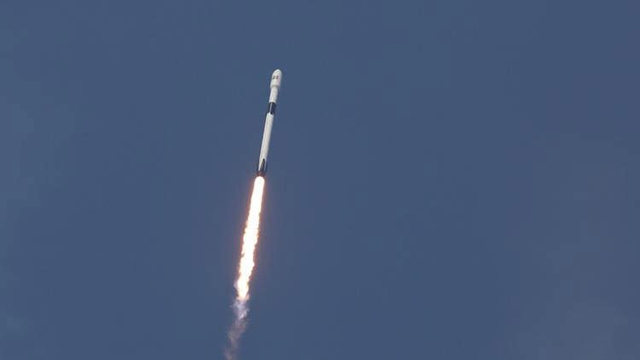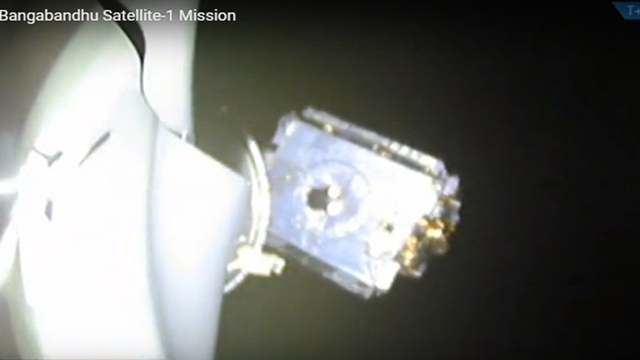Nirmal Barman
Published:2018-05-14 16:11:34 BdST
Bangabandhu-I moving normally towards orbital slot
FT ONLINE
Bangladesh's first geostationary communication satellite Bangabandhu-I (BS-I) is moving towards the designated orbital slot normally along with sending signal to the ground station located in Gazipur, said official.
The BS-I, successfully launched from historic Launch Complex 39A at NASA's Kennedy Space Centre in Florida early hours of Friday, will take 7-9 days to get it position, he added.
Tajul Islam, Operation Engineer at Gazipur Ground Station, said: "BS-I is moving towards the orbital slot with normal motion and started to send signal to us."
Most modern rocket "Block 5" version of the Falcon 9 has lifted the BS-I for the orbit located at 119.1o East on Friday at 16:14 local time (2:14 BST).
"We've received primary signal at the ground station immediately one hour and ten minutes after the launching," added Islam.
He said around two months will be required to get full control of BS-I from the ground stations located in Gazipur's Joydebpur and Rangamati's Betbunia.
A 32-member team has been trained up already to operate the BS-I.
Manufactured by the Thales Alenia Space of France, Bangladesh will operate satellite from 119.1 degree East using a payload comprising 26 Ku-Band and 14 C-Band transponders to deliver focused telecommunications coverage to Bangladesh. One transponder is equivalent to 36 MHz.
Ku-band covers Bangladesh and its territorial area of the Bay of Bengal, India, Pakistan, Nepal, Bhutan, Sri Lanka, Indonesia and the Philippines. C- band covers Bangladesh, India, Indonesia, the Philippines, Myanmar, Bhutan, Nepal, Sri Lanka, Afghanistan, Pakistan, Tajikistan, Kyrgyzstan, Uzbekistan, Turkmenistan, and portions of Kazakhstan.
The government took the Bangabandhu-I project in May 2015 and assigned the Thales Alenia by signing a $248-million deal in November in the same year.
Thales Alenia completed the manufacturing works of the satellite few months ago and kept it in a warehouse in Cannes of France. Later, on March 29, the satellite was shifted to Florida.
The satellite has 15 years for mission life span while another three years for its design.
The satellite will offer video services for Direct-to-Home (DTH), e- learning, Tele-medicine, Family Planning, Farming etc while voice service to cellular backhaul and disaster recovery, etc and data service for internet, SCADA, SOHO as well as business-to-business (VSAT).
Unauthorized use or reproduction of The Finance Today content for commercial purposes is strictly prohibited.


